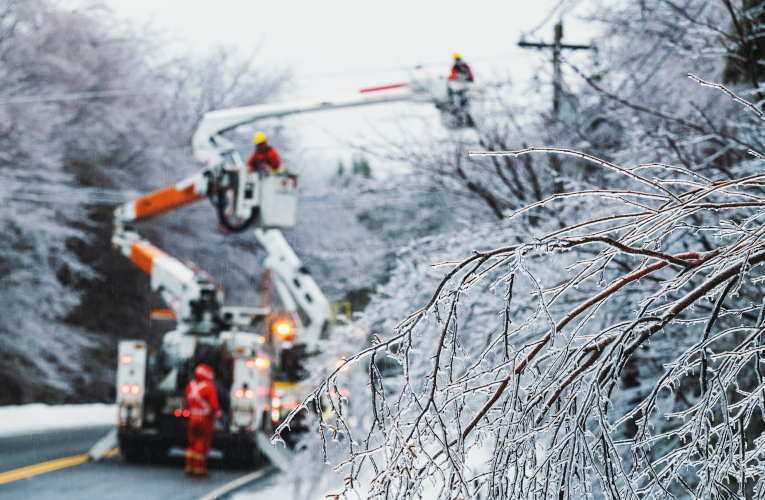
Industry Insights
Navigating Uncertainty: Federal Funding and the Future of Utilities
As the United States transitions to a new administration, questions remain about the future of programs in the Infrastructure Investment and Jobs Act (IIJA) and the critical funding it provides. This landmark legislation has been instrumental for utilities and municipalities, helping them address challenges ranging from extreme weather events and rising energy demand to aging infrastructure and decarbonization mandates. However, a change in agency leadership brings inevitable shifts in policy, staffing, priorities and the availability of even authorized funding.
In the last couple weeks, here are the events that have transpired:
On Jan. 20, 2025, President Trump signed over two dozen executive orders (EO), including one titled “Unleashing American Energy.” Section 7 of this EO states: “All agencies shall immediately pause the disbursement of funds appropriated through...IRA and IIJA” for a period of 90 days, when federal agencies are required to submit reports to the director of the Office of Management and Budget (OMB), describing how those disbursements are consistent with the new Administration’s policy objectives.
On Jan. 21, the OMB issued new guidance, narrowing the scope of disbursement ‘pauses’ to only projects that may conflict with the Administration’s policies—making it less likely to impact GRIP-funded projects supporting grid resiliency. In fact, in his Senate confirmation hearing, incoming DoE Secretary Chris Wright said, “Grid resiliency...is critical. It’s the most urgent energy issue we have today.”
On Jan. 27, the OMB issued additional guidance to federal agencies, which appeared to expand the focus of the E.O., requiring agencies to review all financial assistance programs and to report them to OMB for approval. To further clarify the newest memo, the OMB issued more guidance on Jan. 28, and on Jan. 29, the OMB formally rescinded the previous guidance memos. But not the original “pause” on IIJA and IRA disbursements outlined in the E.O. - Unleashing American Energy.
Until new leadership is in place at federal agencies like the DOE and OMB, the best advice we can offer GRIP awardees is patience. In the interim, target project benefit messaging towards grid resilience, which as Mr. Wright says, is our nation’s “most critical” issue, regardless of the color of the electrons flowing through our aging transmission and distribution systems.
In today’s evolving landscape, utilities are tasked with prioritizing projects that enhance safety, reliability and affordability, all while adapting to potential policy changes. In this blog of our federal funding series, we’re diving into the question: What happens next?
The IIJA at a Crossroads
While the IIJA has paved the way for transformative projects across the energy and water sectors, there’s no guarantee that funding levels and priorities will remain the same. Historically, changes in leadership bring shifts in focus, and the specific ways federal funding supports infrastructure development often evolve. A notable example is the evolution of the American Recovery and Reinvestment Act (ARRA) in 2009. Under the outgoing Bush administration, ARRA centered on addressing the immediate impacts of the 2008 financial crisis, emphasizing economic recovery through tax cuts, emergency financial assistance and limited infrastructure investment. When President Obama took office, the program’s focus shifted significantly toward job creation, clean energy initiatives, infrastructure modernization, expanded social programs and innovation.
While certain funding opportunities face uncertainty, one thing is clear: navigating what comes next will take time, collaboration and some creative thinking. Policymakers, agencies and industry leaders must work together to adapt as the next chapter of federal funding takes shape.
Preparing for What’s Next
While future federal funding opportunities are uncertain, the challenges utilities face remain both pressing and unrelenting. Safety, reliability, resiliency, and affordability will continue to be fundamental priorities, particularly as energy demand grows and consumer expectations shift. Regardless of whether support comes from the IIJA or other government programs, funding will be critical in enabling utilities to address these priorities and adapt to a new policy landscape.
During a time when utility infrastructure and operations must endure both immediate challenges and long-term uncertainties, adopting these strategies can help ensure resilience and adaptability:
- Diversify Funding Sources: In addition to federal grants, explore state-level programs, public-private partnerships and other funding avenues to ensure project continuity.
- Leverage Data and Technology: Investments in real-time data, intelligence at the grid edge and intelligent connectivity technologies can provide utilities with actionable insights to optimize performance and enhance decision-making amid fluctuating funding scenarios.
- Engage Stakeholders: Foster collaboration with policymakers, regulators and industry groups to advocate for funding that supports critical infrastructure and aligns with community needs.
Looking Ahead
While the future of IIJA funding remains to be seen, especially unobligated funds, the utility sector's resolve to address critical challenges continues to gain momentum. As the industry navigates its path forward, Itron is committed to empowering utilities with cutting-edge solutions that enhance resiliency and reliability, optimize efficiency and drive sustainable outcomes. Together, we’re shaping a smarter, more resilient future.
To learn more about federal funding opportunities, visit www.itron.com/iija. For questions, reach out to Liz Thompson, business growth manager. Explore additional insights and related blogs here.





